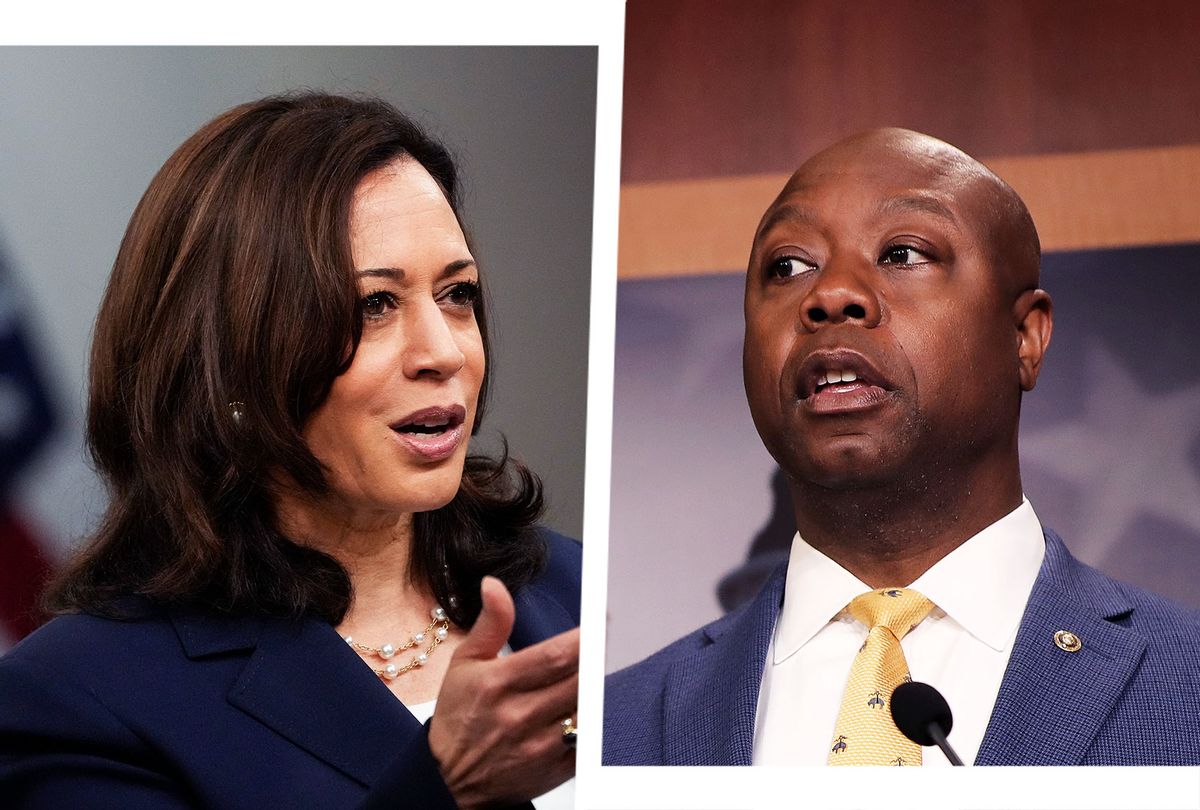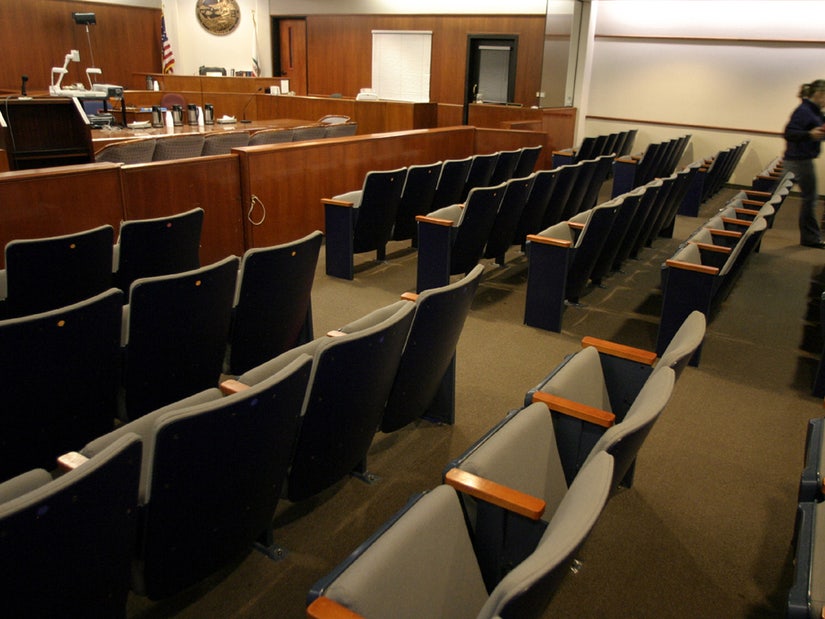
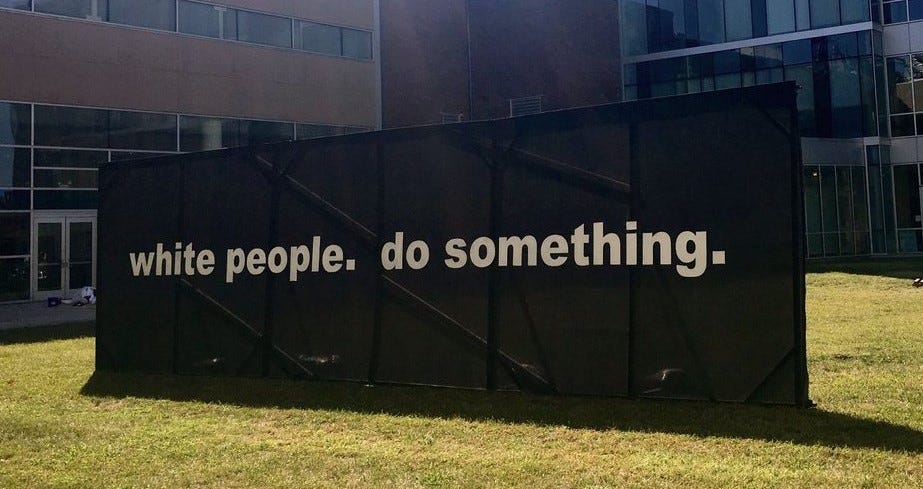
Note 1: This article was last updated on September 21, 2020.
Note 2: Our work to fix what we broke and left broken. The work isn’t done until Black folks tell us it’s done.
- There are varied approaches to ending police violence. The best thing to do is to follow your local Black Lives Matter chapter or other local Black-led organization to find out the proposed policy and funding changes in your city or town. Donate to your local BLM chapter, sign up for updates, volunteer, and take action when asked.
- Campaign Zero has ten evidence-based solutions to address police violence. Contact your city or town government representative(s) and police chief to advocate for these policies.
- Within the evidence-based solutions in #2, Campaign Zero has a project called 8Can’tWait, with eight specific policies to be prioritized to end police violence. The website has a fantastic tool wherein you can see which of the policies your city or town have been enacted. Contact your city or town government representative(s) and police chief to advocate for the policies that have not yet been enacted.
- Find out your city or town’s policy on no-knock warrants (the policy that led to Breonna Taylor’s murder). Contact your city or town government representative(s) and police chief to ban no-knock warrants.
- Write to your state representative and senator to end qualified immunity like Colorado recently did. Qualified immunity permits government officials performing discretionary functions to be immune from civil suits unless the official violated “clearly established statutory or constitutional rights of which a reasonable person would have known.” In recent years, qualified immunity has been successfully used to defend the use of excessive or deadly force by police, like in this case. Thank you to Claudia S. Murray for the suggestion.
- Support a project facilitated by Leap, the Law Enforcement Accountability Project, a fund that empowers activists to change the narrative around the police abuse of Black People. Leap is founded by Ava DuVernay.
- Understand and share what “defund the police” really means. It’s about a new, smarter approach to public safety, wherein we demilitarize the police and allocate resources into education, social services, and other root causes of crimes. What we’re doing now isn’t working — There are so many innocent people who have been harassed or killed by the police unjustly, and nearly every Black American has experienced some form of harassment by the police. Some good resources for this are this video by BLM , this Washington Post article and this Facebook post.
- More and more stories of Black folks encountering racism are being documented and shared through social media — whether it’s at a hotel, with the police, in a coffee shop, at a school, etc. When you see such a post, call the organization, company, or institution involved to tell them how upset you are. Then share the post along with the institution’s contact information, spreading the word about what happened and encouraging others to contact the institution as well. Whether the company initiated the event or failed to protect a POC during an onslaught by a third party, they need to hear from us.
- If you or a friend is an educator, buy said friend books that feature POC as protagonists and heroes, no matter the racial make-up of the class. A few good lists are here, here, here, here, here, here, here, and here. bell hooks, one of the heroes of our time, has authored five children’s books. You can purchase educational toys that feature POC, such as finger puppets, Black History Flashcards, etc for their classroom. Use these items year-round, not just in February. The racial make-up of students doesn’t matter — kids of every race need to know American history and be exposed to people from different races, religions, and countries. If the friend is interested, buy them for your pal’s classroom. Don’t be shy to ask Facebook friends that you haven’t actually talked to in ten years.
- If you or a friend or family member is an educator, watch or share this video of Neil deGrasse Tyson speaking about his experience as a Black student telling people he wanted to be a scientist and astrophysicist. Tyson’s experience reminds me of a Black friend whose high school teachers tried to dissuade her from taking AP classes, because, with the best of intentions, they thought the AP classes would be “too much” for her. Be an educator who supports and encourages, not one who dissuades. Talk to educators you know about being educators who support and encourage, not educators who dissuade.
- Work on ensuring that Black educators are hired where Black children are being taught. If you want to know more about why and how this makes a difference for Black children, check out this episode of Malcolm Gladwell’s podcast. There are some really good nuggets in there about how schools can support the achievement of Black students — from ensuring Black students aren’t closed out of gifted programs by using test results instead of white teachers’ recommendations to the influence that having a Black teacher has on a Black student’s education to the importance to fostering a school ethos wherein Black students think, “This school is here for me.”
- Many companies have recruiting channels that are predominantly white. Work with your HR department to recruit Americans who are descendants of enslaved Africans. Recruiting from HBCUs is a good start. Work to put descendants of enslaved Africans already hired under supportive managers.
- Donate to anti-white supremacy work such as your local Black Lives Matter Chapter, the National Council for Incarcerated and Formerly Incarcerated Women and Girls, the NAACP, Southern Poverty Law Center, United Negro College Fund, Black Youth Project 100, Color of Change, The Sentencing Project, Families against Mandatory Minimums, A New Way of Life, Equal Justice Initiative, and Dream Defenders. Join some of these list-serves and take action as their emails dictate.
- Support Black businesses, as advocated by Killer Mike among countless others. Find them on WeBuyBlack, The Black Wallet, Official Black Wall Street, and Post 21. Another good list is here. Find Black-owned bookstores, florists, and restaurants. Yelp now has a feature to search for Black-owned businesses, and Etsy features Black-owned businesses here. Thank you Corinna Tricaricofor the info on Etsy.
- Bank Black, as advocated by Killer Mike. It doesn’t have to be all of your checking or savings. Opening up an account with some money is better than no account at all. You can use the link from #14 (type “banking” in the Category field) or Blackout to find a bank. At the very least, move some or all of your checking, savings, mortgage, etc out of Wells Fargo as a part of the divestment movement to protect Standing Rock.
- Get your company, place of worship, condo building, gym, etc to move some or all of its money to Black-owned banks, like Netflix is doing.
- Don’t buy from companies that use prison labor. Find a good list here. While Whole Foods is on that list, but pledged to stop using prison labor in 2016, they haven’t made amends for that abuse. You can’t pour gas on a burning building, decide to stop pouring the gas, then walk away like everything is fine. Until Whole Foods pays reparations, they stay on the boycott list.
- Stand outside of the stores from #17 with a sign that reads “[Company] uses prison labor” even if for 30 mins a few times a month.
- Read up about mandatory minimum sentences and watch videos about this on Families Against Mandatory Minimums (FAMM’s) website. FAMM’s website includes work being done at the federal level and state level. Call or write to your state legislators and governor about reducing mandatory minimum sentences for non-violent drug crimes.
- To reduce mandatory minimum sentences on a federal level, call or write to your federal legislators in support of the bipartisan (sponsored by Sen Lee (R-UT)) Smarter Sentencing Act (S. 2850) which reduces the length of federal mandatory minimum drug sentences by half, makes the Fair Sentencing Act’s crack sentencing reforms retroactive, and expands the “safety valve” exception to mandatory drug sentences.
- To reduce mandatory minimum sentences on a federal level, call or write to your federal legislators in support of the bipartisan (sponsored by Sen Paul (R-KY)) Justice Safety Valve Act (S. 399, H.R. 1097), which would allow judges to give sentences other than the mandatory minimum sentence for any federal crime.
- To reduce mandatory minimum sentences on a federal level, call or write your federal legislators in support of another great criminal justice reform bill, the Second Look Act, which would make reduced sentences for crack convictions from the previously passed Fair Sentencing Act retroactive, reduce mandatory minimums for people convicted more than three times for drug crimes from life without parole after the third offense to 25 years, reduce mandatory sentences for drug crimes from 15 to 10 years, limit the use of solitary confinement on juvenile prisoners, etc.
- Call or write to your state legislators and governor to support state-wide criminal justice reform including reducing mandatory minimum sentences, reducing sentences for non-violent drug crimes, passing “safety valve” law to allow judges to depart below a mandatory minimum sentence under certain conditions, passing alternatives to incarceration, etc. Study after study shows that racism fuels racial disparities in imprisonment, and about 90% of the US prison population are at the state and local level.
- Call or write to state legislators, federal legislators, and your governor to decriminalize weed. No, not because Black folks use weed more frequently than white folks. Because Black Americans are arrested for marijuana possession far more frequently than whites.
- Call or write to state legislators to require racial impact statements be required for all criminal justice bills. Most states already require fiscal and environmental impact statements for certain legislation. Racial impact statements evaluate if a bill may create or exacerbate racial disparities should the bill become law. Check out the status of your state’s legislation surrounding these statements here.
- Find and join a local “white space” to learn more about and talk out the conscious and unconscious biases us white folks have. If there’s not a group in your area, start one.
- Join or start a Daughters of Abraham book club in your Church, mosque, or synagogue.
- Join your local Showing up for Racial Justice (SURJ) group. There is a lot of awesome work going on locally — Get involved in the projects that speak to you.
- Do deep canvassing about race and racial justice. Many SURJ groups are organizing them, so many people can do it through your local SURJ group. If they’re not already doing it, start it.
- Research your local prosecutors. Prosecutors have a lot of power to give fair sentences or Draconian ones, influence a judge’s decision to set bail or not, etc. In the past election, a slew of fair-minded prosecutors were elected. We need more.
- Call or write to state legislators, federal legislators, and your governor to end solitary confinement in excess of 15 days. It is considered torture by the UN, and it is used more frequently on Black and Hispanic prisoners. For more information on solitary, two good overviews can be found here and here.
- Watch 13th. Better yet, get a group of friends together and watch 13th.
- Watch The House I Live In. Or get a group of friends together and watch it.
- Read Ta-Nehisi Coates’ article The Case for Reparations and From Here to Equality by William A. Darity Jr. andA. Kirsten Mullen. The US has already participated in reparations four times. Thank you to Clyanna Blyannafor suggesting this addition.
- Participate in reparations. One way is through this Facebook group. Remember reparations isn’t just monetary — share your time, skills, knowledge, connections, etc. Thank you to Clyanna Blyannafor suggesting this addition.
- Read The New Jim Crow by Michelle Alexander. Better yet, get a group of friends together to read it like a book club would — read, then discuss. Buy it from one of these Black-owned bookstores.
- Read Caught by Marie Gottschalk. Better yet, get a group of friends together to read it like a book club would — read, then discuss. Buy it from one of these Black-owned bookstores.
- Read Between the World and Me by Ta-Nehisi Coates. Yep, get a group of friends together to read it like a book club would — read, then discuss. Buy it from one of these Black-owned bookstores.
- Read A People’s History of the United States by Howard Zinn. Thank you to Steve Senatorifor this suggestion. Buy the book from one of these Black-owned bookstores.
- Read Orange is the New Black by Piper Kerman. The information the author shares about the ease with which one can be charged with “conspiracy” to sell drugs, the damage done from long sentences that don’t fit the crime due to mandatory minimum sentencing, the ever-present threat of solitary confinement at a Correction Officer’s whim, and other specific harmful practices in the prison system are well done. Get a group of friends together to read it like a book club would — read, then discuss. Buy the book from one of these Black-owned bookstores.
- Read The Color of Law by Richard Rothstein. Get your friends on board reading it, too. Buy it from one of these Black-owned bookstores.
- Especially if you or a friend is an educator, read or share bell hooks’ Teaching to Transgress. Buy it from one of these Black-owned bookstores.
- Read Nikole Hannah-Jones’ The 1619 Project.
- Buy books, choose TV shows and movies, and opt for toys for your kids, nieces, nephews, etc that show people from different races, religions, countries and that teach real American history. A few ideas: the books, toys, and flashcards from #9.
- Decolonize your bookshelf.
- Listen without ego and defensiveness to people of color. Truly listen. Don’t scroll past articles written by people of color — Read them.
- Don’t be silent about that racist joke. Silence is support.
- Follow Patrisse Cullors, Opal Tometi, Alicia Garzia, bell hooks, Luvvie Ajayi, Melissa Harris-Perry, Van Jones, Ava DuVernay, thenewjimcrow, Laverne Cox, DeRay Mckesson, Rev. Dr. William J. Barber II, Ibram X. Kendi, and Killer Mike. Follow them with the intention of listening and learning only.
- Read Awesomely Luvvie, Blavity, Madame Noir, The Root, The Grio, and Jamelle Bouie’s opinion pieces with a desire to learn and understand better the lives of Black Americans.
- Find out how the near-eradication of indigenous people, slavery, the Civil War, and Jim Crow are taught in your local school. Advocate that history is taught correctly and certain parts are not skipped over or barely mentioned. Ensure the “discovery” of America by Christopher Columbus is taught correctly by using the booklet Rethinking Columbus: The Next 500 Years by Bill Bigelow & Bob Peterson. Use this toolkit to ensure Thanksgiving is taught correctly. Advocate that many voices be used in the study of history. Is the school teaching about post-Civil War convict leasing, the parent to our current mass incarceration system? Talking about slavery alone, is your high school showing images such as Gordon’s scourged back, a slave ship hold, and an enslaved nurse holding her young master? Does the school teach about scientists, inventors, politicians, etc who are POC? Do reading lists include male and female authors who are POC? In my mostly white high school, reading books like Having Our Say, To Be a Slave, The Bluest Eye, and Their Eyes Were Watching God was very important. A great starting list of such books is here. Are Japanese internment camps being discussed? Is history explained correctly in history books? As an example of a severe failure to teach the reality of slavery and its ramifications, check out image 1 and image 2 . There are a lot of great resources out there with a little googling, like PBS’s resources for teaching slavery, this POC Online Classroom blog, Teaching for Change, The Zinn Project’s This Day in History, Teaching Tolerance at the Southern Poverty Law Center (thank you Adajhand), and The National Association for Multicultural Education.
- Arrange for cultural exchanges and cultural ambassadors in your local school’s classrooms. The International Classroom program at UPenn and People to People International are options. The Dept of Education has a good list. Cultural exchanges via the interwebs are very valuable. Actual human interaction between people from different races, religions, and countries (ie: cultural ambassadors) and students in the physical classroom is ideal.
- Seek out a diverse group of friends for your kids.
- Seek out a diverse group of friends for you. Practice real friendship and intimacy by listening when POC talk about their experiences and their perspectives. They’re speaking about their pain.
- Watch these videos to hear first hand accounts of what our Black brothers and sisters live. Then read everyday people’s experiences through the hashtag #realizediwasblack. Watch the rules Tik Tok user @skoodupcam’s mother makes him follow just so he comes home each night. Read You’ll Never Believe What Happened to Lacey: Crazy Stories about Racism by Lacey Lamar and Amber Ruffin. Share with others.
- If there are Black and/or indigenous children/teens in your life, contribute to their college savings plans. You can also contribute to an HBCU, the United Negro College Fund, the American Indian College Fund, or individual college savings plans. Thank you to Rev Dr Pollard for this contribution. Consider making HBCUs and the American Indian College Fund beneficiaries through your will or living trusts. Thank youJanice Crawfordfor this contribution.
- Call or write to your national legislators, state legislators, and governor in favor of affirmative action. Encourage friends to do the same.
- Write to your college/university about implementing all or some of these diversity strategies that effectively promote racial, ethnic, and socioeconomic diversity on campus. Write to the public universities your tax payer dollars support about implementing these diversity strategies.
- Recognize that in the same way saying “slavery is a necessary evil” (Thomas Jefferson’s words) was acceptable by many in 1820, the same way saying “separate but equal” was acceptable by many in 1940, choosing to not condemn white nationalism, the fact that Black people are 2.7 times as likely to be killed by police than white people, the fact that unarmed Black Americans are roughly five times as likely as unarmed white Americans to be shot and killed by a police officer, that the fact the Black imprisonment rate for drug offenses is about 5.8 times higher than it is for whites, etc are acts of overt racism in 2020.
- Write to the US Sentencing Commission (PubAffairs@ussc.gov) and ask them to:
— reform the career offender guideline to lessen the length of
sentences
— change the guidelines so that more people get probation
— change the criminal history guidelines so that a person’s
criminal record counts against them less
— change guidelines to reduce mandatory minimum
sentences for non-violent crimes
— conduct a study to review the impact of parental incarceration on minor children. With more data, the Commission could modify the Sentencing Guidelines and allow judges to take this factor into account when sentencing individuals for non-violent crimes.
— conduct a study to review whether the Bureau of Prisons is following the Commission’s encouragement to file a motion for compassionate release whenever “extraordinary and compelling reasons” exist.
— consider amending the guidelines to reduce sentences for first offenders. - Read Van Jones’ short and to-the-point article about the racial biases of reporters. More examples are here and here. Check out this article discussing how media coverage of the opioid epidemic — which largely affects suburban and rural whites — portrays it as an outside threat and focuses on treatment and recovery, while stories of heroin in the 1970s, crack-cocaine in the 1980s, and other drug problems that impact urban people of color today have focused on the drug user’s morality. Keep an eye out for such biases, and use social media and direct communication to the media outlet to call them out when they occur.
- Donate to groups that are working to put women of color into elected office, to get out the vote, and to restore voting rights to disenfranchised voters.
- Know our American history. Watch Roots, 12 Years a Slave, and Selma, to name a few.
- Check out Black movies, TV, and other media that show POC as lead characters and in their full humanity. Queen Sugar, Insecure, Dear White People, The Carmichael Show, Blackish, Grownish, Atlanta, 2 Dope Queens, Black Panther, A Wrinkle in Time, Get Out, Girls Trip, Sorry to Bother You, United Shades of America, Mudbound, How to Get Away with Murder, Scandal, The Cloverfield Paradox, Sorry to Bother You, Blindspotting, BlacKkKlansman, Little, If Beale Street Could Talk, Queen and Slim, A Black Lady Sketch Show, PBS’ Great Performance of Much Ado about Nothing, The Amber Ruffin Show, Pose, and any movies released by Array are a few. Share them with friends. In addition, if you can’t watch the whole video, watch 13:12 to 15:17 of this discussion about working in Hollywood when you’re not white.
- Know what indigenous land you’re living on by looking that this map and research the groups that occupied that land before you did. Find out what local activism those groups are doing and give your money and time to those efforts.
- When people say that Black Lives Matter is a violent/terrorist group, explain to them that there are fringe groups that are being misrepresented as part of BLM. If conservatives don’t want to be lumped in with the KKK, they can’t lump violent protesters in with BLM.
- When people ask, “Why aren’t you talking about ‘black-on-black crime’?” and other myths about BLM, let Francesca Ramsey help you with those talking points.
- Stop shopping at Amazon and Whole Foods. They advertise on -that’s to say fund- white supremacist media. An easy alternative to Amazon is buying from Black-owned businesses through webuyblack.com, featured in #14. Also check out this “How to Stop Using Amazon” Facebook post.
- Be honest about our history. One genocide, another genocide, then apartheid. It sucks, but it’s true. We’ll never be free from our history unless we’re honest about it. Denial is our pathology, but the truth will set us free.
- If you have a close relationship with a young person of color, make sure he/she knows how much you love them. Love and affirm that child. Thank you to Rev Dr Pollard for this contribution.
- Write to your city or town government representative to replace Columbus Day with Indigenous People’s Day like these cities did.
- Donate to Standing Rock through the Standing Rock Sioux Tribe.
- Write to your city or town government representative to divest from banks that are financing the Dakota Access Pipeline, private prisons, and detention centers. Seattle, Davis, CA, and Los Angeles divested from banks that are funding the Dakota Access Pipeline, and there are campaigns going on in many cities to divest. Cities like New York and Cincinnati have divested from private prisons. Start here: http://howtodivest.org/
- Personally divest your investments in private prisons and detention centers. Start here. Many people are divesting from Wells Fargo for their substantial role in Standing Rock and from private prison companies Corrections Corporation of America (CCA), GEO Group, CoreCivic, and G4S.
- Get your company, place of worship, etc to divest from private prisons and detention centers. Since the start of a national prison divestment campaign, higher ed institutions, churches, and corporations have divested.
- Write to your state legislators to end cash bail. It means that a someone who is legally innocent is put in jail because they can’t afford bail. It means that a defendant can be released pre-trial because of their wealth, not how much of a flight risk they are. It puts more people in detention (which tax payers pay for) and affects a defendants’ ability to maintain employment, access mental and physical healthcare, and be in communication with their family and friends, etc. Housing the approximately 500,000 people in jail in the US awaiting trial who cannot afford bail costs US taxpayers $9 billion a year. Thank you to Elizabeth B.and Cynthia Astlefor suggesting this addition.
- Support organized efforts to end of cash bail by donating to The Bail Project. Bail out a Black mother through The National Bail Out. Thank you to Elizabeth B.and Cynthia Astlefor suggesting this addition.
- Attend town halls, candidate meet-and-greets, etc for political candidates and ask about ending mass incarceration, reducing mandatory minimum sentences, reducing or ending solitary confinement, decriminalizing weed, ending cash bail, divesting from private prisons, divesting from banks, divesting from banks that finance the Dakota Access Pipeline, etc.
- Read this article about an overt white supremacist’s son’s journey to relinquish white supremacy and watch this video about Daryl Davis, a Black man who gets KKK members to disavow by befriending them. For those you know who are overtly racist (see #58), think about ways you can create exposure for them to people who don’t look like them, share their religion, etc. Jane Elliott says, “People who are racist aren’t stupid, they’re ignorant. And the answer to ignorance is education.” Frederick Douglass notes, “It is easier to build strong children than to repair broken men.” It may be best to focus on children, adolescents, and young adults currently being raised by overtly racist parents. Maybe it’s tutoring them so they could get on a college track, encouraging them to study abroad, or turning them on to colleges where not everyone looks like them and shares their religion, etc. Maybe it’s spending time with them on some regularity and showing them the achievements and beauty of non-white cultures. Be creative.
- Talk to the white people you know who aren’t clearly upset by white supremacy. Use “I” statements, “I care” messages (“I feel [feeling] when you [behavior]”), and non-violent communication. They need to know you see a problem. Call them out, and call them in. As a start, ask them to watch the videos in #54. For people you know who’ve been radicalized by FOX News and other nationalist (not conservative) media, who’ve been so pummeled with fear and hatred of “the other” that they’ve become ISIS-like towards others, how can you and other family and friends guide them through conversation to show them that their actions are now in direct contrast with the values they feign to purport?
- A wise former teacher once said, “The question isn’t: Was the act racist or not? The question is: How much racism was in play?” So maybe racism was 3% of the motivation or 30% or 95%. Interrogate the question “How much racism was in play?” as you think about an incident. Share this idea with the people in your life when they ask, “Was that racist?”
- Credit Black men and women. Kara Springer, a Black woman artist, created the image/public art that begins this piece. It’s called A Small Matter of Engineering, Part II. Christian Campbelltweeted to ensure the art was attributed appropriately and correctly.
- Watch Jane Elliot’s blue eyes/brown eyes racism experiment here. Watch Jane Elliot’s a follow-up on the blue eyes/brown eyes racism experiment on Oprah here, and watch Jane Elliot and Roland Martin’s conversation at the University of Michigan’s Women of Color Task Force here. Thank you to Jourdain Blair for this suggestion.
- Anti-racism is a global fight. Don’t buy electronics or jewelry made from conflict minerals. Find an overview and rankings of electronics and jewelry companies’ efforts to source conflict-free minerals here. At your place of work, establish a policy that your company or organization will only purchase electronics from companies that are top-rated. Write to companies on the list and ask them to improve their rank.
- Read this article by educator and activity Bettina L. Love about the harm done by schools to their Black students. Ensure your local school/School Board has a clear and strong policy of zero tolerance for racial slurs, physically touching a child to discipline them, invasions of privacy like strip searches, hair discrimination, etc. “Zero tolerance” means loss of a job, loss of a pension, and mandatory reporting to state Department of Education. If and when school officials don’t comply with their own policies, or when a school refuses to create these policies altogether, use resources at your disposal like social media, local news media, connections to the School Board, etc to hold them accountable.
- Visit sites of American concentration camps, memorials, and museums dedicated to teaching about the genocide and apartheid, past and present. Old Slave Mart Museum in Charleston; The Legacy Museum: From Enslavement to Mass Incarceration in Montgomery; the National Museum of African American History and Culture in Washington, DC; the International Civil Rights Center & Museum in Greensboro, NC; the Whitney Plantationnear New Orleans, the quarters of enslaved people at Monticello in Charlottesville, VA; a tour discussing the lives of enslaved people at Mount Vernon, VA, Underground Railroad locations, etc. Google sites, museums, etc where you can learn about Black history and current life near you or at your next travel destination. Thank you to Charles Chukwuemeka Ekeke for this addition.
- We need to raise children who understand race and are comfortable talking about it. A few resources for that: the book Raising White Kids by Jennifer Harvey, the NPR podcast Talking Race With Young Children, these children’s books, and these resources compiled by the Children’s Community School in Philadelphia.
- Write to your state representative and senator to ban voter ID laws, ease the voter registration process, implement early voting, and implement voting-by-mail. The unfortunate reality of efforts to “fight against voter fraud” is that voter fraud isn’t statistically a problem in this country. Even The Heritage Foundation counts only 1,285 cases of voter fraud… since 1998. Just like poll taxes, literacy tests, and grandfather clauses were “race-neutral” policies that inhibited Black Americans from voting until the Voting Rights Act of 1965 passed, voter ID laws, cuts to voting registration processes, and cuts to early voting are efforts to inhibit Black Americans from voting today. A well-off white person in my life lamented that their children could easily get their ID, so why couldn’t anyone else? This person neglected to recognize that her children had cars to get them to the DMV, lived relatively close to the DMV, had the time to go, etc. This excerpt from the previous link is quite striking: “In the 1930s one Georgia man described the situation this way: ‘Do you know I’ve never voted in my life, never been able to exercise my right as a citizen because of the poll tax? … I can’t pay a poll tax, can’t have a voice in my own government.’ ” Saying, “Just get your ID!” today is the equivalent of saying “Just pay the poll tax!” in 1964. Remember that the restrictive voting laws passed since 2013 have been considered legal only because the Supreme Court gutted the most powerful protections of the Voting Rights Act. Thank you Alice Smithand Sarah Weissfor this suggestion.
- Ibram X Kendi says we need to move beyond saying “racist” and “not racist.” Instead, some white people are practicing anti-racism by (1) divesting themselves of white fragility and defensiveness and choosing to continue to learn and listen to Black folks and (2) dismantling white supremacy in the institutions around them. White supremacy is not just targeted murder of Black men by police. White supremacy pervades every institution — places of work, education, criminal justice, healthcare, government, banks, places of worship, etc. It is our work to dismantle white supremacy in all of these institutions, not just the police. Those who are not practicing anti-racism are perpetuating white supremacy. And we cannot do the external work without doing the internal work.
- Contact your high school and college/university to create a class that teaches white privilege, the subconscious nature of racism in every US institution (schools, offices, etc), use of racial stereotypes by individuals and the media, etc. This class should be mandatory for all students. One such class is CFE 444 — Schooling & Diversity at Syracuse University.
- When people lament that the policing problem is just “a few bad apples,” share the following evidence that it is not: comedian Amber Ruffin discussing her police encounters, the Buffalo cop who intervened on a chokehold and lost her job and pension, the Minneapolis police union chief who used his powerful position to try to justify George Floyd’s torture and death, and the Philadelphia Police Union President who, in his position of authority, called Black Lives Matter protestors ‘rabid animals.’ Remember that the fourth stage of genocide is “dehumanization, wherein members of a particular group “are equated with animals, vermin, insects or diseases.”
- Check out this Anti-Racist/Anti-Fascist Education playlist.
- Don’t gentrify neighborhoods.
- Support that new apartment building proposed to be built in your neighborhood. Don’t participate in “snob zoning,” which is opposing new builds of apartments because wealthy white folks are afraid the apartment building will “change the character of a community.” For more infromation on this, see #41.
- If you or a friend or family member is an educator, ensure anti-racism is in your teaching practice. Some resources for this are the books We Want to do More than Survive by Bettina L. Love, Pedagogy of the Oppressed by Paulo Freire, and Lies My Teacher Told Me by James W. Loewen. Other resources are the Abolitionist Teaching Network, American University’s Summer Institute on Education, Equity, and Justice, Teaching Tolerance, The National Seed Project, The NAIS People of Color Conference, The Race Institute for K-12 Educators, the book The Guide for White Women Who Teach Black Boys, Teaching While White, the White Privilege Conference, and specifically for white teachers of middle school students, the website The Collaborative. Another resource: Each link on this page is a montage of video clips related videos of teachers and students talking about teaching Black boys.
- Array is an independent film distribution and resource collective founded by Ava DuVernay. For students of all ages, Array is creating learning companions for the works they produce and distribute, starting with When They See Us. Check out the learning companion for it here.
- Work on this excellent document of scaffolding anti-racism resources.
- Check out the White Ally Toolkit, which helps white folks become more persuasive in conversations with racism skeptics by empowering and equipping us with best practice communications skills based on listening, storytelling, and compassion.
- Check out the White People Confronting Racism workshop.
- Have an idea to fight white supremacy or sexism or homophobia, etc? Do the research to see if someone who’s Black is already doing it. A Black friend was contacted by a white woman who wanted to organize a BLM protest in her town — my Black friend’s first response was, “Do you know if any Black leaders are already doing it?” The white woman wasn’t sure. Similarly, if Alyssa Milano had checked for #metoo on Twitter before her tweet, she may have found Tarana Burke’s original #metoo tweet from 2006 — and could have rightly attributed the idea from the start and amplified a Black woman’s voice.
- When you see someone who is Black stopped by the police, stop and watch the encounter. Listen to Twitter user @kingkeraun discuss his experience seeing a white woman record an encounter he had with the police.
- Write to your federal legislators in support of The Breathe Act, which Black Lives Matter co-founder Alicia Garza calls “our generation’s version of the Civil Rights Act.” An overview of The Breathe Act can be found here, and a more in-depth summary can be found here. You can become a community co-sponsor of the bill here.
- Write to your federal legislators in support of the Rebuild America’s Schools Act of 2019, which will invest $100 billion over 10 years in fixing America’s public schools. Investing less in incarceration and more in education will go a long way. Because of limited education funding, schools desperately in need of renovations need to compete against each other to be next on the list for the reno. The National Center for Educational Statistics (NCES), a part of the Department of Education, reports that in 2012–2013, “21 percent of schools were in fair condition, and 3 percent were in poor condition.” 3 percent of schools is millions of American children. Millions. The NCES also reports that “the building systems/features were rated as being in fair or poor condition in their permanent buildings in 14 to 32 percent of the schools.” This article gives examples of school facilities in poor condition across the country. Our kids deserve so much better.
- Remember the wise words of Twitter user @itsjacksonbbz: You will continue to mess up racism. So continue to be teachable, open to correction from POC, and vigilantly monitor yourself for defensiveness and white fragility. You never “arrive” as an ally, you must continually *practice* allyship.

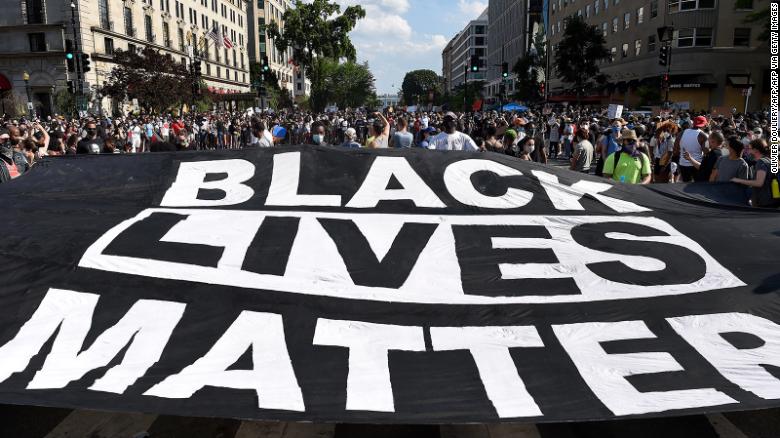
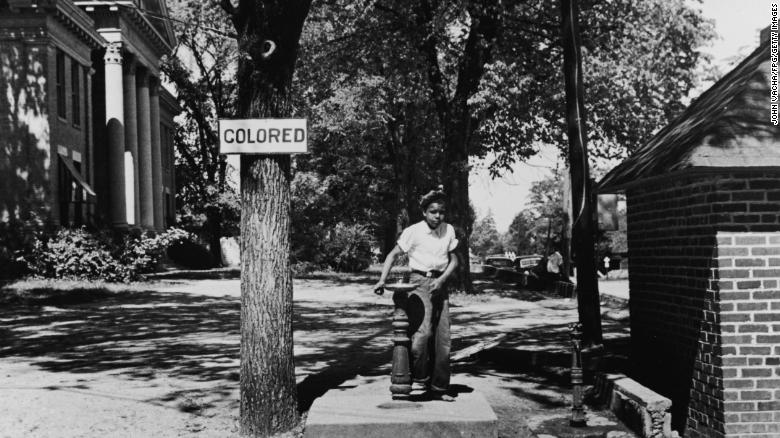 A young boy drinks from the “colored” water fountain on the county courthouse lawn in Halifax, North Carolina, in 1938. Critical race theorists believe that racism is an everyday experience for most people of color, and that a large part of society has no interest in doing away with it because it benefits White elites. Many also believe that American institutions are racist and that people are privileged or oppressed because of their race. While the theory was started as a way to examine how laws and systems promote inequality, it has since expanded. “Critical race theory attends not only to law’s transformative role which is often celebrated, but also to its role in establishing the very rights and privileges that legal reform was set to dismantle,” Crenshaw told CNN. “Like American history itself, a proper understanding of the ground upon which we stand requires a balanced assessment, not a simplistic commitment to jingoistic accounts of our nation’s past and current dynamics.”
A young boy drinks from the “colored” water fountain on the county courthouse lawn in Halifax, North Carolina, in 1938. Critical race theorists believe that racism is an everyday experience for most people of color, and that a large part of society has no interest in doing away with it because it benefits White elites. Many also believe that American institutions are racist and that people are privileged or oppressed because of their race. While the theory was started as a way to examine how laws and systems promote inequality, it has since expanded. “Critical race theory attends not only to law’s transformative role which is often celebrated, but also to its role in establishing the very rights and privileges that legal reform was set to dismantle,” Crenshaw told CNN. “Like American history itself, a proper understanding of the ground upon which we stand requires a balanced assessment, not a simplistic commitment to jingoistic accounts of our nation’s past and current dynamics.” “Words That Wound: Critical Race Theory, Assaultive Speech, And The First Amendment,” a book by several legal scholars.
“Words That Wound: Critical Race Theory, Assaultive Speech, And The First Amendment,” a book by several legal scholars.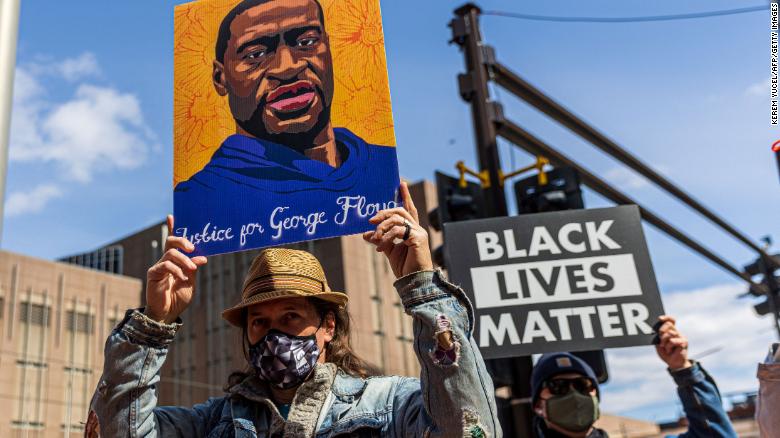 Demonstrators hold signs honoring George Floyd and other victims of police violence during a protest on March 28, 2021, in Minneapolis. Over the past year many Americans have called for for an examination of systemic racism — in part through education such as the teaching of
Demonstrators hold signs honoring George Floyd and other victims of police violence during a protest on March 28, 2021, in Minneapolis. Over the past year many Americans have called for for an examination of systemic racism — in part through education such as the teaching of  Former President Trump: “Critical race theory is being forced into our children’s schools.””Students in our universities are inundated with critical race theory. This is a Marxist doctrine holding that America is a wicked and racist nation, that even young children are complicit in oppression, and that our entire society must be radically transformed,”
Former President Trump: “Critical race theory is being forced into our children’s schools.””Students in our universities are inundated with critical race theory. This is a Marxist doctrine holding that America is a wicked and racist nation, that even young children are complicit in oppression, and that our entire society must be radically transformed,” 


